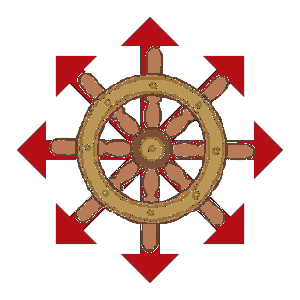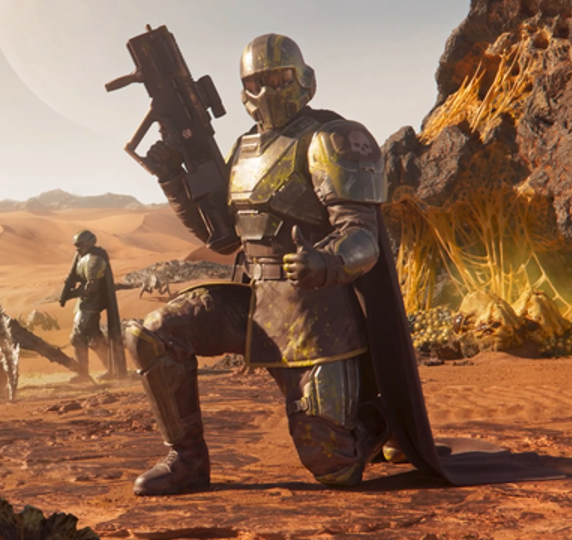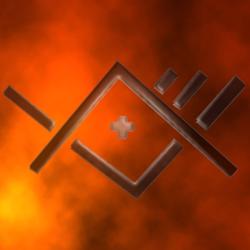So whose foot exactly?
Some European king or another. We didn’t invent the system, we just decided it was too expensive to bother with changing it.
Cousin Merle’s (including toenails).
Could also be his dad’s feet, but then it’s only the toenails.
The only positive thing I see about imperial is that things are easily divisible by 3 and 6, but that’s about it. Then again, if doing the same with metric, you’re usually fine rounding to the nearest millimetre, and if that isn’t accurate enough, it’s probably not supposed to be done by hand anyway.
I’ve banged on about this at length before. I prefer woodworking in inches because I have to divide by 3 and 4 a lot more often than divide by 5. It turns out that the fractional inch system evolved alongside woodworking for a very long time and it solves a lot of the problems woodworkers actually face…as long as you’re not a European scraping in the dirt for something to feel superior about.
I do woodworking a bit too, but I normally just do the slanty ruler/tape trick to divide any straight parallel face into n equal lengths. I hate all forms of mental arithmetic; I also avoid measuring as much as possible too. Maybe that’s why everything i make is so shit.
I guess if you’re mass producing things you can’t just manually mark off each and every part though - but even then I’d probably want to work to a template rather than to measure.
A template or jig, yeah. If I’ve got more than one part to make, especially if they need to match in some substantial way, I set up a stop of some kind.
At some point I may attempt to build a project to a scored storey stick rather than to measurements, but on the other hand I may not.
It’s funny how the biggest argument for metric is that it’s so accurate but in real life use it degrades to “close enough”. My main problem with metric is that I can’t get my pencil that sharp.
The biggest argument for metric is that it’s consistent. It takes 1 calories to heat 1k of water by 1 degree. State something similar in imperial units.
1 BTU heats 1 pound of water 1 degree Fahrenheit.
How many BTUs are there in a big mac?
No acknowledgement at all that I literally just answered your question?
I see my trap was fallen into.
You mean 1 gram of water
I do. Wrong letter.
And isn’t 1kg of water 1L? And 1L is 1000 cubic cm? So a 10x10x10 cube?
100 degrees out is 100% hot. 0 degrees F is 0% hot
It’s accurate when you need it to be and gets out of the way when you don’t. And if you do need the accuracy, you have a unit that doesn’t need fractions.
What are you even trying to say here? Yeah, in real-life use we use “close enough”. I don’t need to know that it’s 1,546 metres to the nearest supermarket. 1.5 km is close enough.
But nobody is suggesting it because it’s “so accurate”. Any system can be accurate, depending on how many sig figs you use. The advantage of metric is on how easy it is to convert between different scales. Use millimetres, metres, or kilometres for the appropriate case, depending on the need you have for precision. And just move the decimal point if you decide you don’t need as much precision…or need more. In archaic measurements, you can’t do that. If you’ve got 342 feet and decide you actually only need to be accurate to the chain, you have to memorise the arbitrary number of 3 feet to a yard, and 22 yards to a chain, and divide 342 by those numbers, to arrive at 5.2 chains.
Aren’t chains only used by railworkers?
Not really the point.
But no, it’s not only used by rail workers. At the very least, I know it’s also used in cricket.
Okay, but I don’t use a measurement system for close enough, I use a measurement system when I want to be precice.
How is “accurate” an argument?? You can use any unit with any amount of decimal places. The argument is that it’s regular. You learn the prefixes once and apply them to length, volume, weight, …
Most standard measuring tapes have 1/16th of an inch as the smallest fraction on the tape. 1mm is 1/32nd Which is one is “close enough”? Lol
Edit: 1/32, not 1/64
Way off! There are 25.4 millimeters per inch, not 64, and most measuring tapes have 1/32" markings.
Haven’t had my coffee, you’re right it’s closer to 1/32.
Most measuring tapes in US don’t go smaller than a 1/16th though.
Base 12 is easily divisible by 2, 3, 4, 6 and 12
5,280 ft in a mile is fucking nonsense though
Base 60 can do 2, 3, 4, 5, 6, 10, and 12.
True… Honestly never really thought about it, but I guess it kind of is superior
I think a mile is specified in terms of ‘chains’ not really feet or yards. Feet and yards are meant for measuring smaller stuff, like the size of a foot, or a courtyard.
The ‘chain’ was a specific surveyors tool for measuring larger land areas. I imagine defined to be a length of physical chain practically manageable by the surveyor - probably pre-dating optical / triangulation methods before lenses got cheap.
I think an acre was then defined as 10 square chains or something.
But go back in time far enough and different jurisdictions have different lengths of standard chain, so different miles and acres derived from it. But it doesn’t really matter because if you were buying land in Scotland, then you’d probably want to use a Scottish surveyor and his big long chain.
The nautical mile is then a whole other kettle of fish.
If an alien species has 12 fingers to our 10, would they work in base 12 as normally as we use 10s? Like would their whole system end (or start) with a 0 or equivalent and not end all different?
My maths coherence is too high-school for this thinking, but now its in there.
There’s really nothing special about base 10 numbering, it just feels natural to us. They probably would use base 12 and just have 2 extra symbols for the digits after 9. Example 10 x 10 = 100 in both base 10 and base 12 math. It’s just the translation of that in base 12 to base 10 looks like 12 × 12 = 144 to us.
The Babylonian number system was base 12, that’s why there are 24 hours in a day and 60 minutes in an hour. Afaik they had the normal number of fingers, they were just smarter about making their numbering system divisible.
The just started counting with zero (fist)
That gets you base 11, which is what we count on our fingers in now.
They counted, at least for tallying, by putting their thumb on the three finger bones if the other four fingers on the hand. One hand can count to 12, and then you lift a finger in the other when starting over. That method gives you a count of 60’on your fingers. That’s why 12 and 60 still crop up all the time.
0, 1, 2, 3, 4, 5, 6, 7, 8, 9, A, B, 10, 11, 13, 14, 15, 16, 17, 18, 19, 1A, 1B, 20, 21, …, A0, A1, A3, …
You can use your hands to count in base 12 if you want to, and some cultures have done so. Just use the segments on your fingers on one hand, using your thumb to count each segment.
It’s not nonsense, just old and focused on priorities that don’t matter anymore. A mile was initially a thousand paces. So you send a group of people out, one counts each time their right foot takes a step and after a thousand times they build a mile marker. Bam, roman road system. 1000 strides per mile, 5 feet per stride.
Later the English used the unit as part of their system of measurement, and built the furlong around it, which is the distance a man with an ox team and plow can plow before the ox need to rest. A mile is eight furlong. This got tied into surveying units, since plots of land were broken up into acres, or the amount of land an ox team can plow a day.
When some unit reconciliation needed to be done, they couldn’t change the vitality of oxen, and changing the survey unit would cause tax havock, so they changed the size of a foot.All the units and their relationships were defined deliberately and intentionally. They just factored in priorities that we don’t care about anymore.
Because there’s a extra system of measurement change hiding in the middle. The Inches, Feet and Yards system (with the familiar 12:1 and 3:1 ratios we know and love), and Rods, Chains, Furlongs and Miles system. Their conversation rates are generally “nice”, with ratios of 4 rods : 1 chain, 10 chains : 1 furlong, and 8 furlongs : 1 mile.
So where do we get 5,280 with prime factors of 2^5, 3, 5 and 11? Because a chain is 22 yards long. Why? Because somewhere along the line, inches, feet and yards went to a smaller standard, and the nice round 5 yards per rods became 5 and 1/2 yards per rod. Instead of a mile containing 4,800 feet (with quarters, twelfths and hundredths of miles all being nice round numbers of feet), it contained an extra 480 feet that were 1/11th smaller than the old feet.
The fun one is a nautical mile. Which is 6076.12 feet. How’d we get there? A nautical mile is equal to a minute of latitude, which happens to be just a bit bigger but on the order of magnitude of most “miles” to include the US statute mile.
Fair, but I lived in Denver for 26 years. I will never forget the number of feet in a mile. 😂
Heeey, I’m currently living in Northglenn. Same, it’s forever etched in my memory.
What the heck does this mean? Is the number 5280 just painted all over billboards in Denver?
So many businesses and shops are named 5280. Breweries, coffee shops, bars, transmission shops, interior design shops, animal hospitals, dry cleaners, bakeries…that number is plastered on signs and advertisements everywhere. 😂
Sounds like they take their distances pretty seriously over there in the mile-high city
Basically yes. We even have a local magazine called 5280.
Pretty much. If you go to a Broncos game, you’re going to see a graphic saying we’re 5280 feet above sea-level at least a hundred times.
Edit: These are just some examples that in the non-public areas of the stadium to mess with opposing teams.




They’re right. Altitude sickness is absolutely real. I live in CT pretty close to sea level. I hiked the flatirons in Boulder and puked my guts out when I came back down.
The first time I ever took a non-pressurized aircraft to 10,000 feet was an interesting experience. I noticed myself breathing…not heavier, that feels like the wrong word, because I had the opposite problem to “heavy.” I needed to breathe noticeably deeper and faster just sitting still at the controls of the plane doing maybe slightly more work than typing this sentence. Somebody from a lower area going up to Denver (about half the altitude I flew to that day) to play a sport has an elevated chance of Not A Good Day.
You’d think the Rockies would have a better record but they somehow still consistently suck
Management has no incentive to field a competitive team. They are the worst team in baseball, haven’t been any good since 2007, and they are currently 9th in attendance, in a not-so-huge market.
Metric will never recover from not being base-12. Ease of use and intuitiveness suddenly trumps “objective” design. We’d have metric time right now, smh.
Base 60 is five times better again
Let me tell you about base 5040
If only they made a meter equal a yard. Then we could all be bilingual.
deleted by creator
We don’t count in base-12. Redesign the numerical system first and get it adopted world wide. I’ll wait.
If there’s a better base than 10, it is a power of two.
Nah, highly composite number. A product of multiple primes. 10 is 2 and 5. A power of 2 is just multiple 2s. 12 gets you 2, 2, and 3. 60 adds a 5.
I’ve never once had to convert miles to feet or vice versa in nearly 40 years (besides a couple test questions in school). It’s a total non issue in the whole SI vs US system debate
And to remember the number of yards in a mile: 1 San Francisco
One-seven-six-oh
I just remember that a mile has 1000 strides in it.
Of course. I was trying to make something less useful than knowing the strides in a mile.
Take heart. You can easily remember that a stride is 5’ 3 9/25” because that’s the height of the typical Roman soldier after adjustment for 15th century English agricultural tax methodology.
At first I thought that’s how Americans measure it - in San Franciscos. But given how “San Francisco” doesn’t sound like “One seven six oh” I’m not sure if they don’t.
It’s not a good tip, but this is how I hear it:
1: One
San Fran: Seven
Cisc: Six
O: Oh
I just came up with it off the cuff, but I may use it going forward. I’ve never been able to remember feet or yards in a mile.
Also, we only measure length in bananas and fractions thereof.
I wish we had a metric inch because the fuzziness can be useful.
“How small do you need these veggies diced?”
“2.5cm ish” vs. “about an inch”I feel like the implied margin of error is much larger for inches, which make them useful for many things where precision isn’t necessarily desirable (hemming, wargaming, moving furniture, etc…). If I’m wargaming having a limit on rounding is useful (half an inch - either round up or down), assuming I’m playing at a scale that uses inches.
Feet I have no use for, with one exception - adult human height between 5’ 2" and 6’ 2". There I find metric too precise (whereas to the nearest inch accounts for variance in sole thickness, hair volume, etc.).
I wasn’t raised on imperial (and I’m baffled that people younger than me in the UK still talk about stones. Sixteen stone is fat, sure, but I’ve no idea how fat if not told in kilos) but I find inches to have their uses.
Also miles for cars - because common speeds are ~60 and ~30 mph so a road sign effectively gives the time to arrival (e.g. 13 miles on a motorway = about 13 minutes). I don’t use them for actually measuring distance on a map but they’re handy when driving.
We kind of do have metric inches, insofar as machinists work in 'thou’s (thousands of an inch) But that’s kind of specialist
Thousandths of an inch are also used in some engineering applications and are called “mils.” Not to be confused with millimeters.
Why not say ‘2-3 cm’ for the first one? Or ‘a couple centimeters’? It doesn’t feel too different from saying ‘about an inch’ to me
It’s to do with how I think about numbers, rounding, and margins of error. I don’t know how to express that better, I’m sorry.
I was not raised using inches for anything. It’s not a cultural thing, it’s a use case I’ve found them useful for.
Taking it even further who the fuck uses inches or cms for vegetable cutting measurements anyway, it’s like, one or two fingers thick
Recipes I use regularly say “2cm chunks” and the like. I’ve never seen one measure in fingers.
Why not make it even more ambiguous by specifying the desired cutting width in “circumference of my dick”.
That’s too thin
Would that be flacid dick inches or erect dick inches?
Sure.
Do you want to develop imperial measurements? Because that’s how you invent imperial measurements. Next thing you know you’ve got a cup that’s really good for measuring liquids and a couple spoons you like to scoop with…
We are talking about cutting vegetables maybe meat, the room for error is enormous…
Oh, certainly. I just enjoyed that, in a thread about the vagueness and oddness of the imperial system, the suggestion came up to use a casual approximation for the inch instead of the word “inch”.
Not in defense of the imperial system, but if you’re curious why it’s so arbitrary, it’s a crazy story about untangling a ton of proprietary guild measurements. The mile itself isn’t quite proprietary (it was defined as 8 furlongs, and you can blame the English for ruining a perfectly good roman measurement) but they needed to make it a certain number of chains, rods, yards, and feet, plus a few other obscure measurements I forget about. Naturally that results in a stupid conversation rate (mostly vs yards and feet since it was basically a different system).
Why we still use it, dunno. I can see an argument for keeping feet and inches for things like carpentry (in the similar way I like hexadecimal in programming) but miles is not that. It’s about as logical as this point as fahrenheit, which is to say it’s outdated nonsense.
To me, Fahrenheit is a lot like inches and feet for carpentry. As in it’s fine for things like describing the weather and setting my house’s thermostat. It mostly falls apart for must other things, though it’s still okay for cooking and baking. From a scientific perspective, any temperature scale that isn’t zero at absolute zero is nonsense, so it’s pretty much Kelvin or bust.
You don’t have to use it though. Reject it.
Arguing with the imperial system is like arguing with my mother. She knows her ways and methods are insane, but she will try to explain why she needs each of those eight furlongs. Either ADHD will steal her ability to finish the explanation or the audience will perish from exhaustion. And she still will be the smartest person in the room.
In traditional carpentry inches and feet make sense because of the high divisibility. We don’t get as much benefit from that now though.
We still use hex with computers because that’s what they’re made using (rather binary, but hex is just a natural group of binary digits). The usage of binary is ultimately more grounded in the objective than the usage of base 10 in the SI system. Nature dictates the relationships between the units, but we pick the quantities so it works out to a nice base 10 set of ratios.
Base 2 naturally arises when dealing with information theory that underpins a lot of digital computing.Say what you will about the imperial system, but you can pry binary, octal, and hex from my cold dead hands.
If you want to convert between imperial units, going straight from feet to miles is impractical. You’d be better off knowing the chart of survey units, and they’re all small numbers so they’re easy to remember.
12 inches in a foot
3 feet in a yard
22 yards in a chain
10 chains in a furlong
8 furlongs in a mile
Of course, i know this because I do 3d art in blender and refuse to set it to metric.
Remembering 12, 3, 22, 10 and 8 does indeed sound way easier than remembering 1000.
Than remembering 10, 10, 10, 10, 10, 10; because metric has more measurements most people don’t use as well!
- 10 millimetres to a centimetre
- 10 centimetres to a decimetre
- 10 decimetres to a metre
- 10 metres to a decametre
- 10 decametres to a hectometre
- 10 hectometres to a kilometre
I know right? it’s such an intuitive system with a convenient unit for every scale you might want to work with.
I genuinely can‘t tell if you are being serious. Could you tell me at face value, I just want to know.
I don’t know glitchdx from Adam, but I say with confidence that they were being sarcastic, and laying it on pretty thick.
yeah, it sucks. There’s no actual case for imperial over metric. it’s just what I’ve spent years getting used to and I’m not changing now.
The imperial units were created for practical every-day measuring, so if you know how to apply them, they still hold up to the task. Just more difficult to use for large data sets like architectural models etc.
Metric? True it’s nice to have the scales evenly spread
How do you do weight measurements? I noticed a lot of Americans use grams
Nutrition is in grams on purpose to be confusing to a population corpos knew weren’t really raised with it. By 9th grade all Americans have studied the metric system for science class, but it never really becomes intuitive for most people whereas we can hear “a cup of sugar, oh wow that’s a LOT of sugar for just one pitcher of liquid” without doing any in-head conversions
When you use a cup, we use a deciliter-cup. I agree that cooking gives intuition on units. But who will buy a deciliter cup if no recipe uses deciliters?
Yeah, that’s an important point. Someone needs to think of the deciliter cups if they try to get rid of imperial units in the US.
We use both. Body weight is in pounds, but nutrition is in grams.
In general we use metric more for smaller, more precise weights and imperial for everything else. I don’t think I’ve ever heard anyone measure anything except cocaine in kilograms.
Weight is in pounds. Only pounds. don’t ask me how much a gram or a ton is.
Volume, though, I still remember “Gallon Man” from 1st grade.
2 cups in a pint
2 pints in a quart
4 quarts in a gallon
What’s after gallons? not a clue.
You use fluid ounces and liters as well tho
Drugs are done in grams i think, methric
Of course, i know this because I do 3d art in blender and refuse to set it to metric.
You monster.
The dark side can be a pathway to many abilities some might consider … stupid.
Of course, i know this because I do 3d art in blender and refuse to set it to metric.
Did the metric system kill your family or something?
Why not just keep it simple and use the 5.4 microseconds * speed of light approximation? People just love making things overly complicated.
Especially when you just set c = 1
Just remember God giving you a single grain of sand. “One thou sand”.
Not a easy to remember as 5 tomatoes.
“In metric, one milliliter of water occupies one cubic centimeter, weighs one gram, and requires one calorie of energy to heat up by one degree centigrade—which is 1 percent of the difference between its freezing point and its boiling point. An amount of hydrogen weighing the same amount has exactly one mole of atoms in it. Whereas in the American system, the answer to ‘How much energy does it take to boil a room-temperature gallon of water?’ is ‘Go fuck yourself,’ because you can’t directly relate any of those quantities.” ― Josh Bazell, Wild Thing
I remember reading this quote a few years ago (probably Reddit), but I don’t remember if attribution was given. Kudos to you CAVOK.
I love this quote.
It might be funny if it were true, but it’s just a sad show of ignorance. It is exactly as possible in one as in the other for obvious reasons. It’s just not as easy to memorize.
To be specific:
- energy required to heat to boiling point 1180 kJ
- energy required to convert to vapor 8420 kJ
- energy required to heat to boiling point and convert to vapor 9600 kJ
Nobody said impossible, just that you can’t directly relate any of those quantities.
Can’t we just agree that metric is superior?
But they are just as directly related.
Ok, so rewrite the statement using imperial instead. Let’s compare them.
“High. You put the stove on high.”
What about a nautical mile?
Did someone say feet?
“Because we are free men, we will be free to measure liquids in liters and milliliters… but not all liquids, only soda, wine, and alcohol because for milk and paint we will use gallons, pints, and quarts, god willing”
“How many liters are in a gallon, sir?” “Nobody knows.”
“Why not use meters and kilometers?” “We sill, soldier. But only in certain unpopular sports like track and swimming.”


















